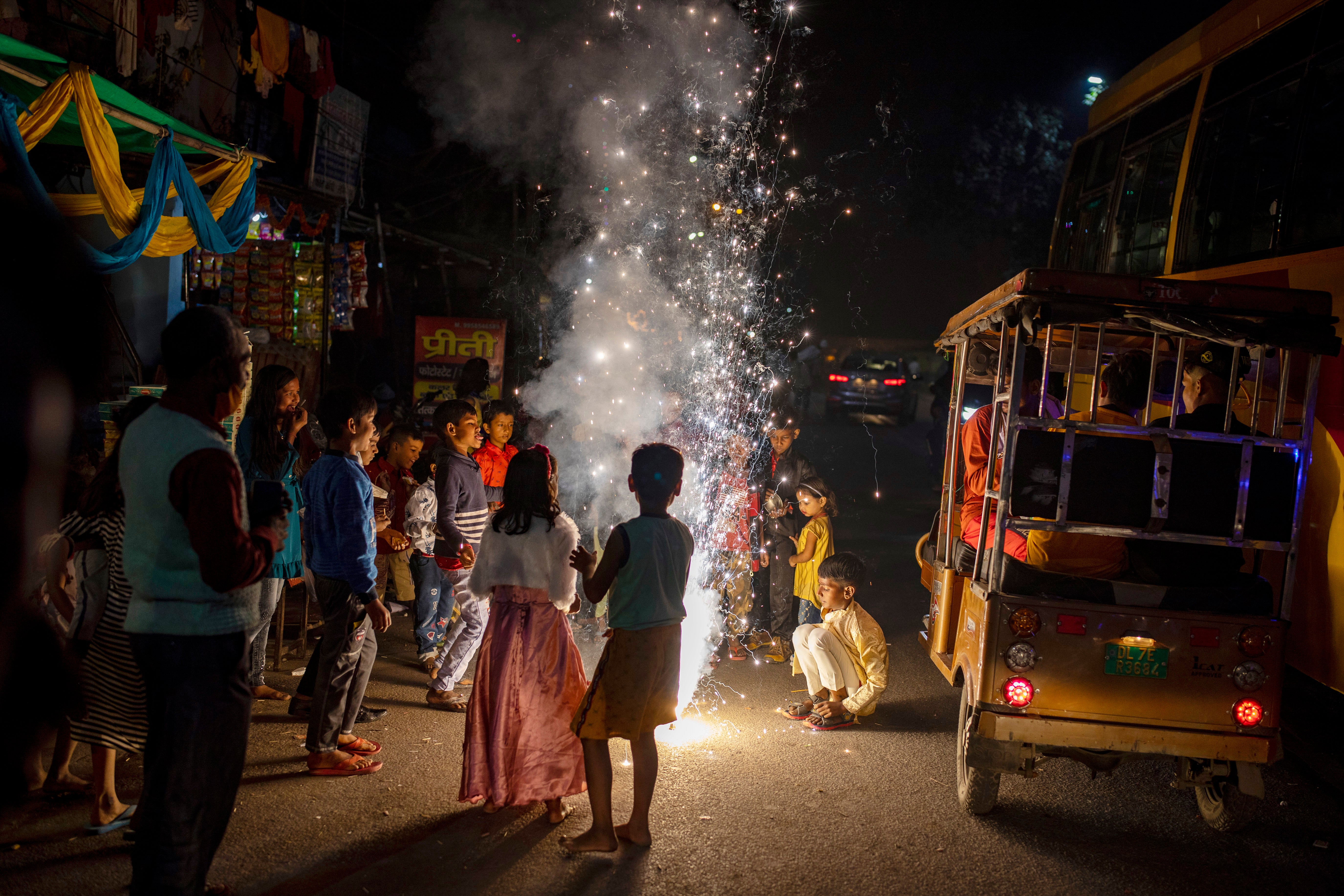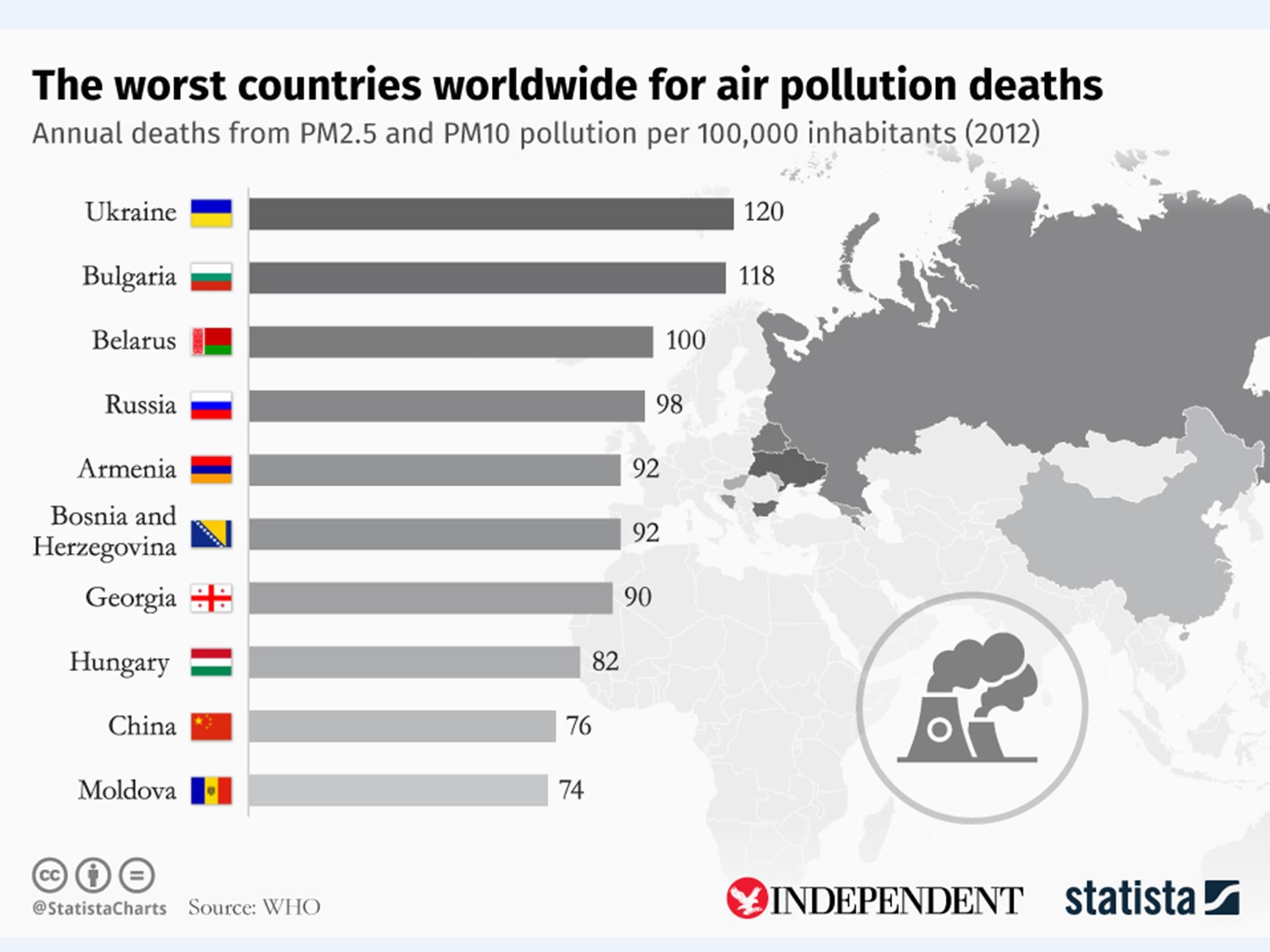
Delhi has once again become the world's most polluted city following Diwali celebrations as people in the Indian capital continued to burst firecrackers despite a government ban.
After a night of relentless fireworks, the Swiss firm IQAir reported an Air Quality Index, or AQI, of 348 for the city, categorising air quality as "hazardous” for its 33 million residents.
The fireworks happened despite the Delhi government banning the production, sale, and use of firecrackers until New Year’s Day.
This is not the first time Delhi’s residents have defied the ban on burning firecrackers during Diwali. Since its introduction in 2017, the seasonal ban has been widely violated, with many residents citing tradition and cultural significance as reasons for continuing the practice of burning firecrackers.
The challenge of enforcing the ban is compounded by the easy availability of firecrackers in the city.
As dusk fell on Thursday, the noise of firecrackers bursting increased as AQI worsened. The fireworks continued until late into the night.
Yet, Delhi’s environment minister thanked the residents for “largely refraining from bursting firecrackers” on Diwali. “Thanks to the responsible actions of many residents who avoided using firecrackers, we managed to avoid a severe AQI reading,” Gopal Rai said.

Air pollution monitoring stations in RK Puram and Jahangirpuri areas reported dangerous PM2.5 concentrations, reaching 900 micrograms per cubic metre, far above the safe limit of 60 micrograms.
Similarly, Patparganj, Okhla, and Nehru Nagar saw PM2.5 levels in the range of 850–900 micrograms by 10 pm, pushing the AQI into the “hazardous”category.
As the night progressed, the air quality across the city and the broader National Capital Region worsened.
By Friday morning Delhi’s overall AQI had hit 359, making it the most polluted city in the world for the day.
The city woke up to thick smog, reducing visibility and making air heavier to breathe. Poorer areas in the north and east reported AQI levels near or in the “severe” category, making the air extremely unhealthy.

Delhi’s air quality is already poor from October to December and the bursting of firecrackers during Diwali only makes it worse.
Although the city faces moderately poor air quality due to emissions from a large number of old and poorly maintained vehicles, along with releases from industries, throughout the year, cooler temperatures and stagnant air conditions in the winter months trap pollutants closer to the ground, leading to severe smog episodes.
To make matters worse, farmers burn stocks of stubble in nearby agricultural regions during this period. In spite of government policies to incentivise farmers against burning stubble, there has been only a small decrease in farm fires over the last few years.
In response to the escalating pollution crisis, the Delhi government activated stage 2 of the Graded Response Action Plan which includes measures such as halting construction activities and restricting the use of diesel generators.
Mr Rai said mobile smog guns were deployed across the city, actively spraying water on roads to minimise dust and mitigate pollution levels.
Authorities have also intensified monitoring and enforcement efforts to ensure compliance with pollution control measures.
Delhi’s toxic air is especially damaging to children, the elderly, and those with respiratory conditions. They face increased risks of ailments like asthma, bronchitis and other respiratory infections from breathing the polluted air.
A study published in June found that air pollution has killed 135 million people in the last four decades around the world, with India and China accounting for the bulk of the fatalities.







